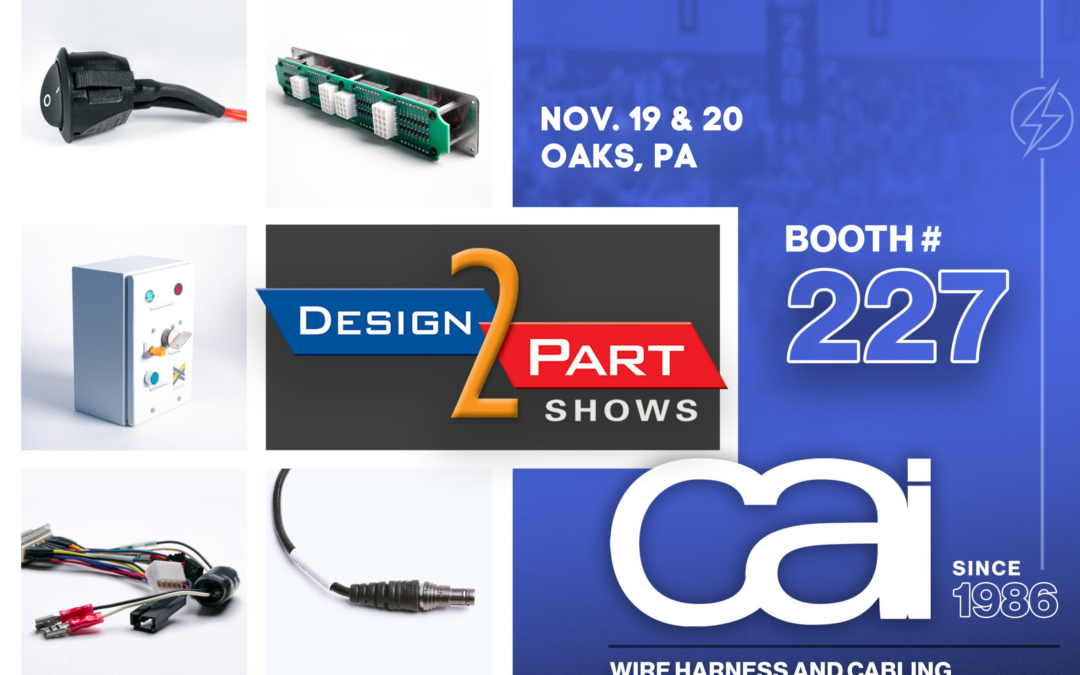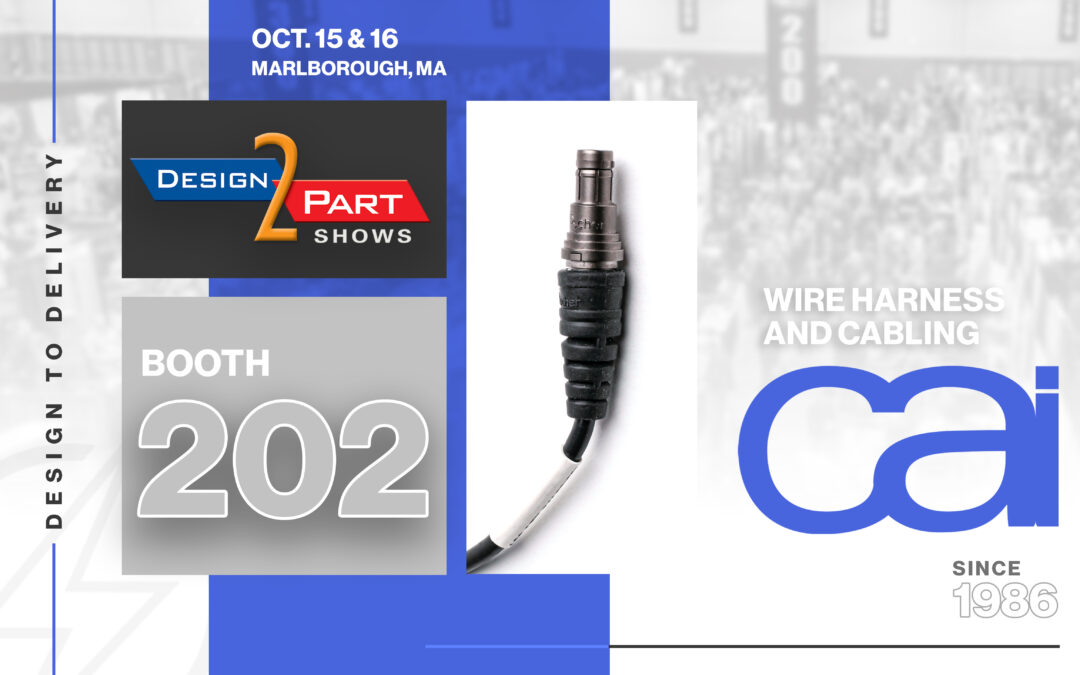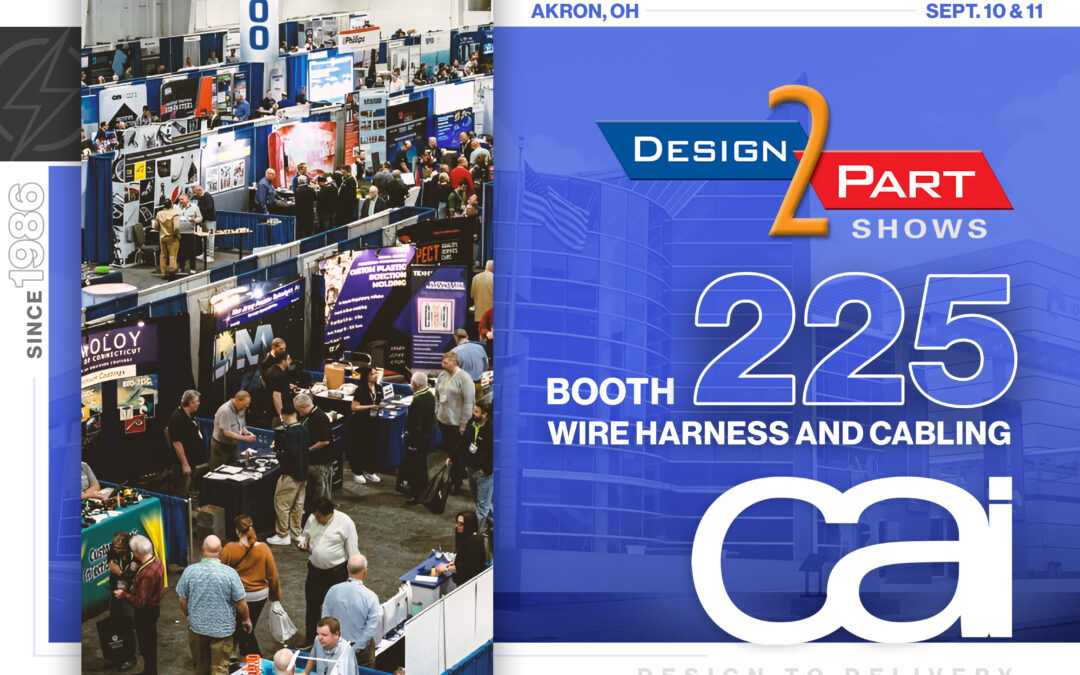How an AWG Chart is Used to Select the Best Wire for Each Application
When designing a custom wire harness, manufacturers take many factors into consideration to help them choose the best wire to use, including its future application and overall project budget.
Because wires are available in a wide variety of widths, wire “gauges” are used as a measurement of a wire’s diameter or cross-sectional area which determines how much current can flow through a wire, its resistance, its weight per unit of length, and design cost.
Used predominantly in North America since 1857, American Wire Gauge (AWG) is a logarithmic standardized system for designating the diameters of single, round, solid, nonferrous electrical conductors (wires). While much of the world relies on a metric-based system, most of the U.S. uses AWG.
Popular materials like copper and aluminum have known electrical properties, and this standardization allows engineers the ability to design the most precise, effective and reliable harnesses for each project.
The cross-sectional area of each gauge helps determine its ampacity — the maximum current, in amperes, that a conductor can carry continuously without exceeding its temperature rating. Stranded wire’s AWG is determined by the cross-sectional area of the equivalent solid conductor. Tiny gaps between strands produce a slightly larger overall diameter than solid wire with the same AWG.
There are 40 different gauge sizes between 0000 and 36, separated by a constant multiple. Every decrease of 6 gauges, the wire’s diameter doubles, while a 3-gauge decrease doubles the cross-sectional area. The system works in an inverse manner, i.e. the lower the AWG number, the higher the diameter. The lowest numbered one, 0000 AWG, is nearly .46 inches, or nearly ½ inch, while 40 wire is .0031 inches.
Wire gauges must be chosen to have the ideal resistance for its application for optimal performance and to avoid safety issues. The larger a wire’s circumference (smaller gauge), the less resistance the signal or current will have, and the less able the wire may be to handle a specific electrical load.
A smaller gauge (larger size) wire can safely conduct more electricity than a larger gauge (smaller size) wire, thus decreasing the AWG size of a wire increases the amount of current it can carry. Meanwhile, with longer wires, the current must travel further before termination resulting in greater resistance which can degrade the signal. A larger gauge wire can help strengthen the signal for longer distances.
Not sure which wire gauges to use for your specific application? Reach out to the experienced CAI team for help with all your electrical project needs.
Due to a variety of reasons — mainly electrical load, resistance and safety requirements — certain sizes are more common in different industries and applications. The most common sizes for homes and buildings are 14- and 12-gauge wires while large appliances like stoves, dryers and central air units often use 10-, 8- or 6-gauge. Meanwhile, most wiring in automobiles is 16- or 18-gauge.
While there are a variety of different wire gauge charts, here is a simple AWG chart for reference. Keep in mind that Max Current ratings on charts can vary according to application (e.g. power transmission or grid application ratings are lower to account for more safety compared to residential applications).
| AWG
gauge |
Diameter
(Inches) |
Diameter
(mm) |
Ohms per
1000 ft |
Ohms
per km |
Max amps
— chassis wiring |
Max amps
— power transmission |
| OOOO |
0.4600 |
11.6840 |
0.0490 |
0.160720 |
380 |
302 |
| OOO |
0.4096 |
10.40384 |
0.0618 |
0.202704 |
328 |
239 |
| OO |
0.3648 |
9.26592 |
0.0779 |
0.255512 |
283 |
190 |
| 0 |
0.3249 |
8.25246 |
0.0983 |
0.322424 |
245 |
150 |
| 1 |
0.2893 |
7.34822 |
0.1239 |
0.406392 |
211 |
119 |
| 2 |
0.2576 |
6.54304 |
0.1563 |
0.512664 |
181 |
94 |
| 3 |
0.2294 |
5.82676 |
0.1970 |
0.646160 |
158 |
75 |
| 4 |
0.2043 |
5.18922 |
0.2485 |
0.815080 |
135 |
60 |
| 5 |
0.1819 |
4.62026 |
0.3133 |
1.027624 |
118 |
47 |
| 6 |
0.1620 |
4.11480 |
0.3951 |
1.295928 |
101 |
37 |
| 7 |
0.1443 |
3.66522 |
0.4982 |
1.634096 |
89 |
30 |
| 8 |
0.1285 |
3.26390 |
0.6282 |
2.060496 |
73 |
24 |
| 9 |
0.1144 |
2.90576 |
0.7921 |
2.598088 |
64 |
19 |
| 10 |
0.1019 |
2.58826 |
0.9989 |
3.276392 |
55 |
15 |
| 11 |
0.0907 |
2.30378 |
1.2600 |
4.132800 |
47 |
12 |
| 12 |
0.0808 |
2.05232 |
1.5880 |
5.208640 |
41 |
9.3 |
| 13 |
0.0720 |
1.82880 |
2.0030 |
6.569840 |
35 |
7.4 |
| 14 |
0.0641 |
1.62814 |
2.5250 |
8.282000 |
32 |
5.9 |
| 15 |
0.0571 |
1.45034 |
3.1840 |
10.44352 |
28 |
4.7 |
| 16 |
0.0508 |
1.29032 |
4.0160 |
13.17248 |
22 |
3.7 |
| 17 |
0.0453 |
1.15062 |
5.0640 |
16.60992 |
19 |
2.9 |
| 18 |
0.0403 |
1.02362 |
6.3850 |
20.94280 |
16 |
2.3 |
| 19 |
0.0359 |
0.91186 |
8.0510 |
26.40728 |
14 |
1.8 |
| 20 |
0.0320 |
0.81280 |
10.150 |
33.29200 |
11 |
1.5 |
| 21 |
0.0285 |
0.72390 |
12.800 |
41.98400 |
9 |
1.2 |
| 22 |
0.0254 |
0.64516 |
16.140 |
52.93920 |
7 |
0.92 |
| 23 |
0.0226 |
0.57404 |
20.36 |
66.78080 |
4.7 |
0.729 |
| 24 |
0.0201 |
0.51054 |
25.67 |
84.19760 |
3.5 |
0.577 |
| 25 |
0.0179 |
0.45466 |
32.37 |
106.1736 |
2.7 |
0.457 |
| 26 |
0.0159 |
0.40386 |
40.81 |
133.8568 |
2.2 |
0.361 |
| 27 |
0.0142 |
0.36068 |
51.47 |
168.8216 |
1.7 |
0.288 |
| 28 |
0.0126 |
0.32004 |
64.9 |
212.8720 |
1.4 |
0.226 |
| 29 |
0.0113 |
0.28702 |
81.83 |
268.4024 |
1.2 |
0.182 |
| 30 |
0.0100 |
0.254 |
103.2 |
338.4960 |
0.86 |
0.142 |
| 31 |
0.0089 |
0.22606 |
130.1 |
426.7280 |
0.700 |
0.1130 |
| 32 |
0.0080 |
0.2032 |
164.1 |
538.2480 |
0.530 |
0.0910 |
| 33 |
0.00710 |
0.18034 |
206.9 |
678.6320 |
0.430 |
0.0720 |
| 34 |
0.00630 |
0.16002 |
260.9 |
855.7520 |
0.330 |
0.0560 |
| 35 |
0.00560 |
0.14224 |
329.0 |
1079.120 |
0.270 |
0.0440 |
| 36 |
0.00500 |
0.12700 |
414.8 |
1360 |
0.210 |
0.0350 |
The AWG system is a handy reference for determining the best wire to use for your projects, but it’s always best to leave it to the pros when you need optimal precision, safety and reliability from your electrical products.
For all your wire harness and cable assembly needs, trust the experts at CAI to work with your unique specifications and customize your product for optimal performance. Contact CAI to discuss your electrical project today.





